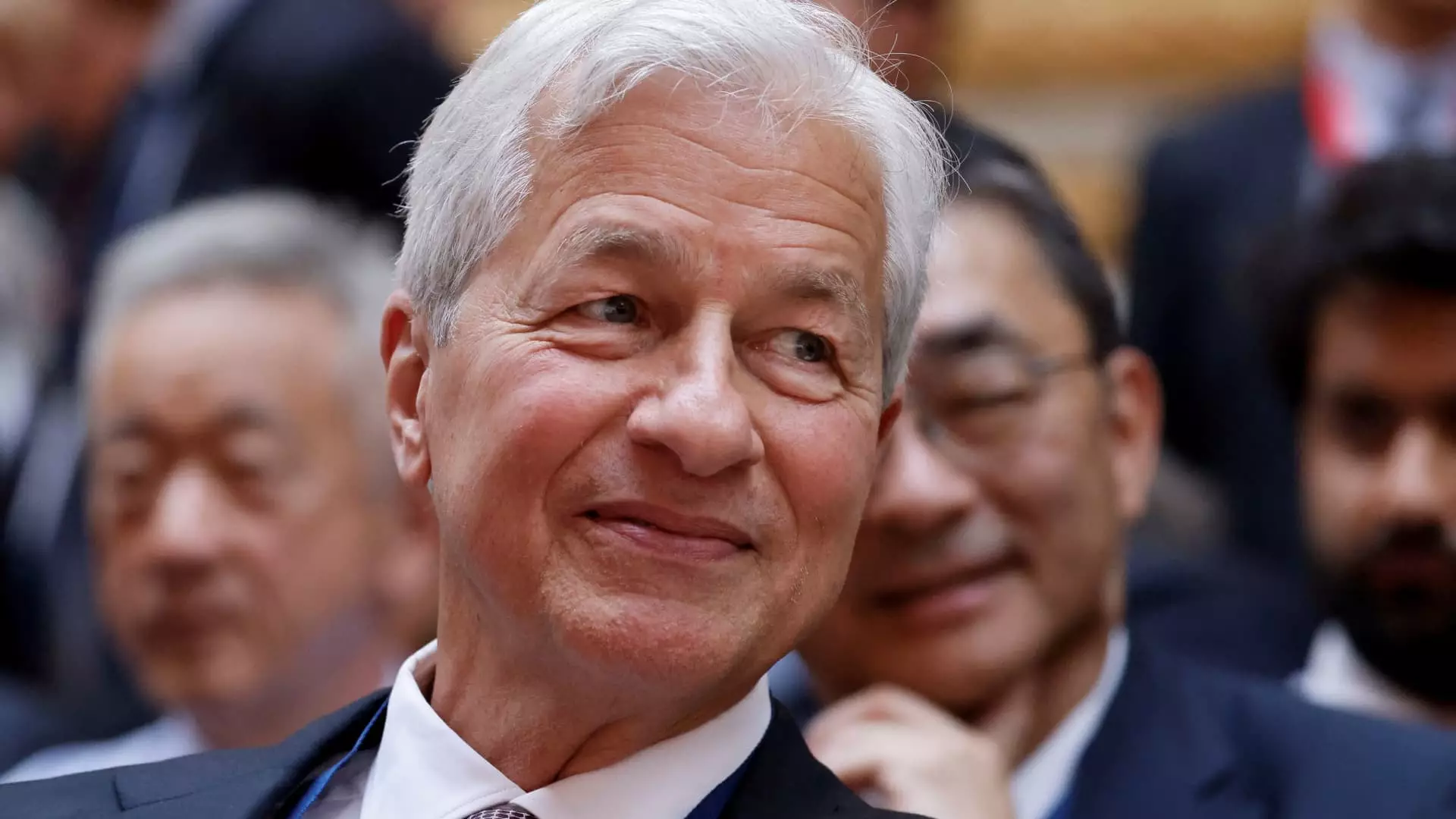JPMorgan Chase, the largest bank in the United States, has recently found itself navigating a perplexing dilemma regarding its sizeable cash reserves. After experiencing an unprecedented year of profitability and revenue generation, the bank is now contemplating how to manage the vast sums of excess capital it has accumulated. With estimates suggesting that JPMorgan holds around $35 billion in excess cash—funds that surpass regulatory requirements—the institution faces questions from analysts and investors regarding its future strategies.
The term “excess capital” refers to the funds that banks retain above regulatory requirements, which offer them flexibility in funding and investment opportunities. For JPMorgan, this excess capital is both a blessing and a potential burden, leading to what CFO Jeremy Barnum has described as a “high-class problem.” While such reserves depict financial strength and stability, they also invite scrutiny regarding their utilization. Investors are increasingly eager to understand how the bank plans to leverage these funds effectively.
One of the primary strategies being considered is increasing share buybacks. This method serves a dual purpose: it returns value to shareholders and mitigates the risk of excess capital accumulating further. Barnum’s emphasis on using buybacks as a strategy was evident during recent discussions with analysts. He highlighted that capital returns through buybacks would become more prevalent unless immediate opportunities for investment present themselves.
The banking sector is undergoing significant transformations, especially in light of impending regulatory changes. Historically, institutions like JPMorgan stockpiled capital in anticipation of stricter regulations, such as those outlined in the Basel III framework. Yet, recent shifts in the political landscape—with expectations of regulatory leniency under the Trump administration—may alter the strategic considerations for banks. Market analysts are now speculating about the implications of this new regulatory environment and how it might affect JPMorgan’s management of its capital reserves.
Engaging openly with analysts during its investor day, CEO Jamie Dimon expressed caution regarding the bank’s stock pushbacks. He remained firm against initiating buybacks when the stock was nearing its peak values, suggesting that the bank’s valuation was inflated and thus unsustainable for such actions. Dimon’s stance reflects a discipline within the bank to avoid making shortsighted financial decisions, valuing strategic prudence over immediate returns.
One compelling aspect of the current scenario is JPMorgan’s prudent management against the backdrop of potential economic downturns. Dimon and other executives have consistently warned of economic headwinds that could materialize in the form of a recession. Despite these predictions not yet realizing, the bank remains vigilant in preparing for potential adverse outcomes. Barnum noted a “tension” between the prevailing high asset prices and looming economic risks, asserting the need for comprehensive scenario planning.
In this context, maintaining a robust cash reserve becomes even more critical. Should an economic downturn materialize, the bank would be well-positioned to deploy its excess capital strategically—particularly through increased lending activities when competitors may falter. Such a tactical approach could enhance JPMorgan’s market share, providing it with a competitive advantage in challenging times. Analyst Charles Peabody emphasizes that disciplined capital deployment is vital for navigating economic cycles effectively.
JPMorgan Chase’s approach to its excess capital illustrates a careful balance between shareholder expectations and strategic foresight. As the bank contemplates increasing share buybacks and potential investments, it must remain mindful of the larger economic landscape and regulatory environment. The prudent management of excess capital is a critical component of JPMorgan’s overall strategy, enabling it to adapt to uncertainties while maximizing opportunities for growth. Employing a disciplined approach, the bank can position itself to thrive, no matter the economic climate that lies ahead.

